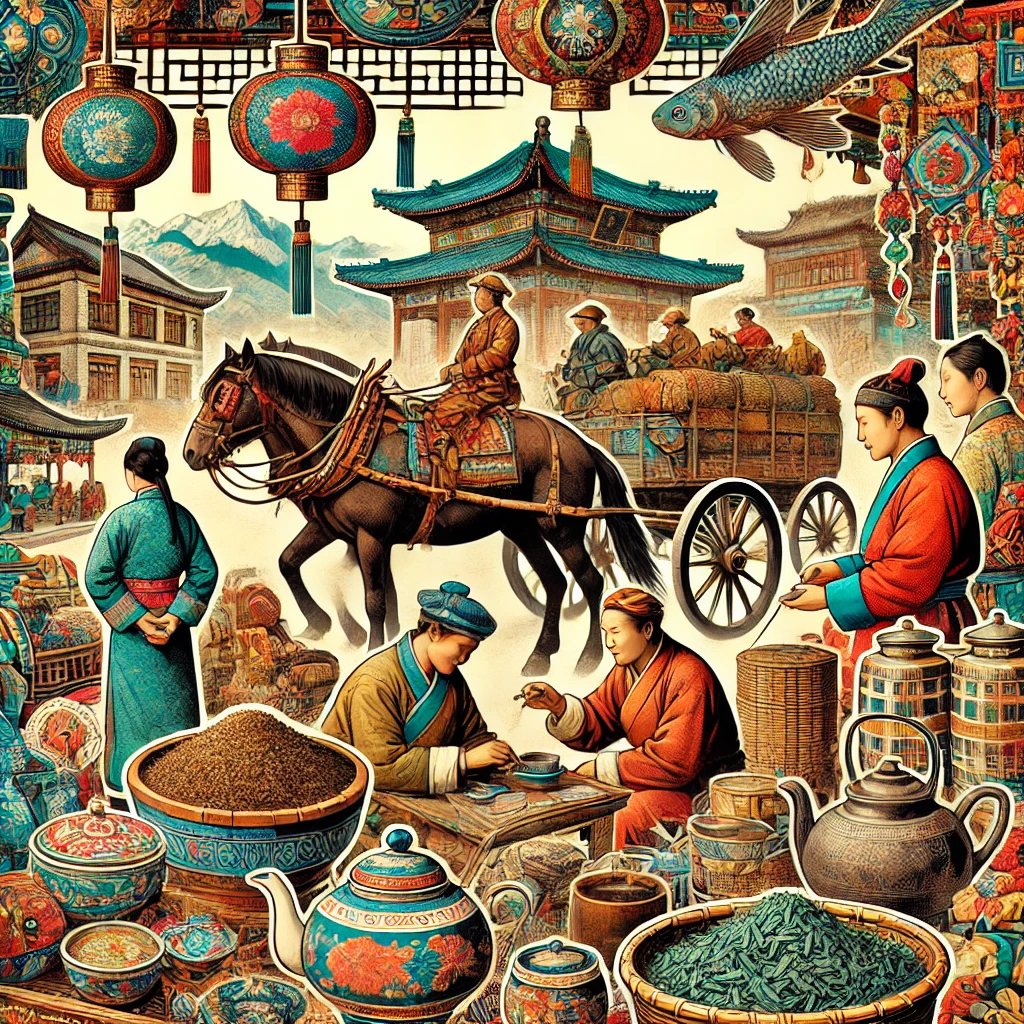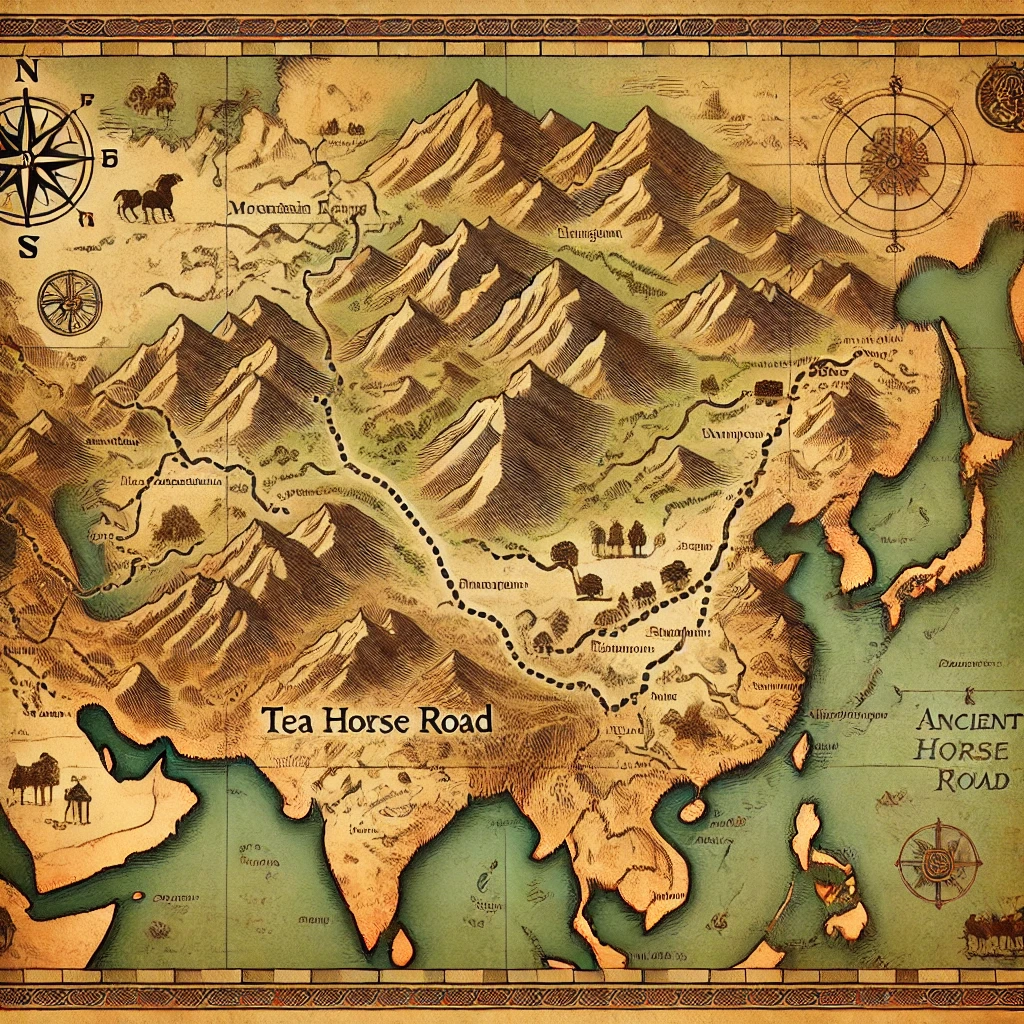Long ago, before modern roads and trains, people traveled along a mysterious network of paths known as the Tea Horse Road. This ancient trade route connected China with Tibet and India and played an important role in spreading ideas, cultures, and goods for many centuries. In this post, we will explore the history, the journey, and the lasting legacy of this incredible road.
What Was the Tea Horse Road?
The Tea Horse Road was not a single road but rather a network of trails that stretched for more than 2,000 kilometers. It first began during the time of the Tang dynasty in China (around 618-907 CE) and remained busy for over a thousand years. This road earned its name because Chinese tea was traded for strong and healthy horses from Tibet and other regions. Over time, many different products were exchanged, which helped strengthen relationships between the people of China, Tibet, and India .
The Route and Its Challenges
The journey along the Tea Horse Road was not easy. The paths started in the southwestern regions of China, with famous towns like Dali and Lijiang serving as important starting points. From there, traders would travel high into the mountains to reach Lhasa in Tibet and then make their way further into the Indian subcontinent. The terrain was extremely tough, with some parts of the road reaching elevations of over 10,000 feet. Travelers had to brave cold weather, steep cliffs, and winding paths, making every journey a true test of courage and determination.
What Did People Trade?
The exchange of goods along this ancient route was as diverse as it was fascinating. Chinese traders would bring tea, silk, cotton fabrics, sugar, and rice noodles. In return, they received horses, leather, animal hides, and even precious items like Tibetan gold and medicinal herbs. These goods were not just valuable for trade; they also helped spread ideas about art, technology, and even religion. For example, Buddhist teachings and practices traveled along these routes, influencing communities far from their original homes.

A Road of Cultural Exchange
Beyond the trade of material items, the Tea Horse Road was a vital pathway for cultural exchange. People from different ethnic backgrounds—such as the Han Chinese, Tibetans, and various South Asian groups—met along the way. They shared traditions, languages, and customs, which enriched each culture. This blending of cultures is still remembered today in art, music, and even in the way tea is prepared in some parts of the world. Many towns along the route, like Lijiang, still celebrate their unique history with festivals and are now recognized as UNESCO World Heritage Sites citeturn1file4.
The Decline and Enduring Legacy
With the arrival of modern transportation like railways and steamships in the late Qing dynasty (1644-1912), the importance of the Tea Horse Road began to fade. Even though the route saw a brief revival during times of war, the building of new roads and rail lines eventually made the ancient network obsolete. However, the spirit of the Tea Horse Road lives on. Today, the route is celebrated as a symbol of human adventure, cultural connection, and the innovative ways people solved the problems of long-distance trade in the past.
Interesting Facts and Figures about the Tea Horse Road
- The network stretched over 2,000 kilometers (about 1,200 miles) across challenging mountain terrain and deep valleys.
- It was active for more than 1,000 years, starting during the Tang dynasty (618–907 CE) and continuing through successive Chinese dynasties.
- Chinese traders exchanged highly prized tea for strong Tibetan horses, while also trading silk, spices, and medicinal herbs.
- Caravans often faced high-altitude challenges, with some parts of the route reaching over 3,000 meters (nearly 10,000 feet) above sea level, where thin air and unpredictable weather made travel difficult.
- Caravan groups could include dozens of pack animals and hundreds of traders, who traveled together to support each other during the arduous journey.
- The route served as a vibrant cultural melting pot, facilitating the exchange of ideas, art, and traditions, which influenced local customs and festivals.
- Towns like Dali and Lijiang still celebrate this rich heritage, preserving relics and traditions that continue to attract tourists today.
Why It Matters Today
Even though we have airplanes and highways now, the story of the Tea Horse Road teaches us important lessons. It reminds us how trade can bring people together from different lands and how the sharing of goods and ideas can shape societies. The legacy of this ancient route continues to inspire historians, travelers, and educators alike, and it remains a powerful example of how cultural bridges can change the world.
By learning about the Tea Horse Road, we can appreciate the rich history behind everyday items like tea and horses and understand how ancient trade networks have influenced the modern world.





